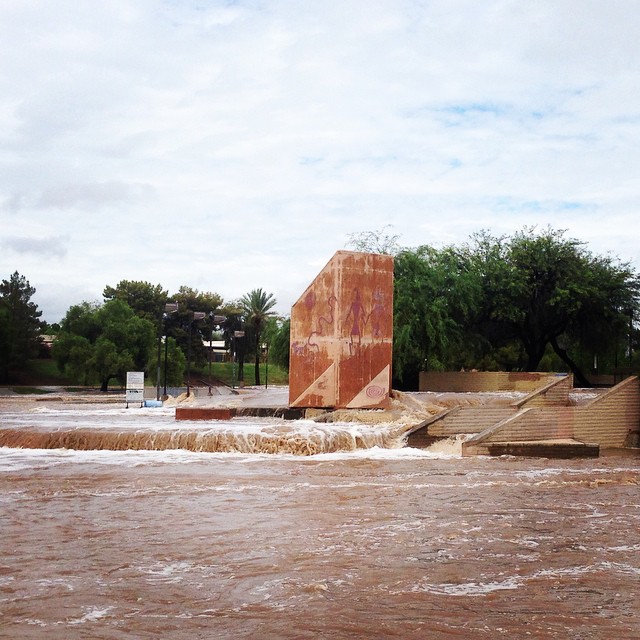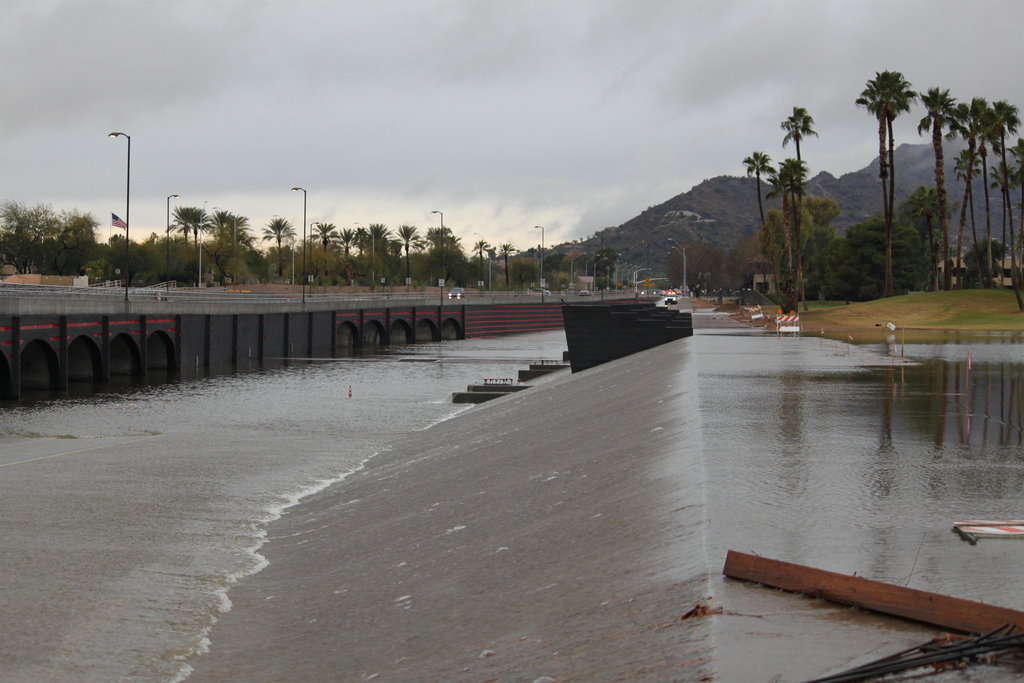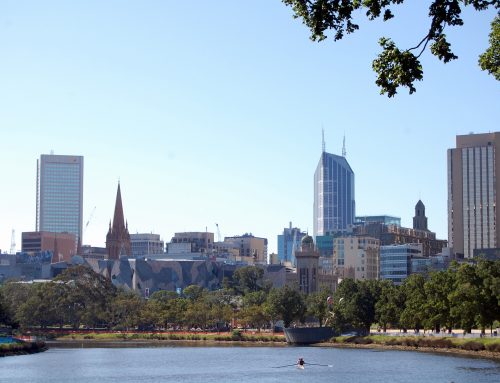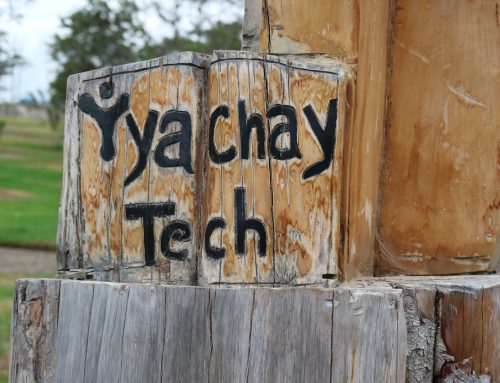How can infrastructure protect urban areas from extreme weather, while providing other benefits when weather is non-extreme?
Indian Bend Wash in Scottsdale Arizona is a 17 km greenbelt that runs through the Phoenix metropolitan area in the SouthWest United States. It is “green infrastructure” designed to provide both flood protection and recreation.
Indian Bend Wash is a historic floodplain, which was urbanized in the 20th century. In the late 1960s, development in the floodplain resulted in substantial property damage when a severe flood occurred.
The greenbelt was developed as an alternative to large concrete flood channels that were planned for the region in the 1960s and 70s. When it was constructed in the 1970s, the Phoenix metropolitan area was under a 1/3 of its current population.
[youtube https://www.youtube.com/watch?v=UDE5ffsKwQw]
Indian Bend Wash was designed by the national and local governments to transform the wash into a chain of small lakes connected by stream channels and surrounded by parks and golf courses. These lakes and streams are maintained by imported water. Park managers keep track of how much water to soil and plants use local weather monitors to estimate how much water plants and soil evaporate, to limit additional water to what is needed.
It seldom rains in Phoenix, so on most days the greenbelt provides people with a cooler greener place that most of the heat and concrete of the Phoenix metropolitan area, which people use for travel and recreation, and the greenbelt provide habitat for plants and animals. You can view the area on Google Earth.

Flooding at Skate Park in Indian Bend wash photo by Jon Roig
When it does rain in Phoenix, the wash fills with stormwater that runs off from the paved areas surrounding it. The wash is designed to cope with floods. Grass and trees stabilise the soil, so it is not washed away during floods. Small floods have little impact, while damage to vegetation and bike paths that can be damaged in big floods are designed to be easily repaired. This ability to cope with bigger floods is especially important as both the paving of a growing Phoenix and climate change are expected to increase the frequency of extreme floods.
In September 2014, a similar-sized storm to the storm described in the video above, occurred. But unlike the earlier storm, the September 2014 caused little damage. The wash did overtop its banks, but the damage caused was minor and quickly recovered from.
Indian Bend Wash is an example of safe-fail, resilient, green infrastructure that provides multiple benefits to people and wildlife. However it is a novel ecosystem that also has problems. It requires water to be maintained and it frequently has algal blooms due to high concentrations of nutrients.
For more information see:
The Arizona State University Resilience Cities project
and
Roach, W. J., Heffernan, J. B., Grimm, N. B., Arrowsmith, J. R., Eisinger, C., & Rychener, T. (2008). Unintended consequences of urbanization for aquatic ecosystems: a case study from the Arizona desert. BioScience, 58(8), 715-727.



